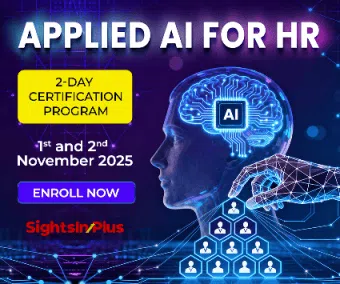We often think of culture as something that just happens, organically, over time. But in reality, culture, like strategy or infrastructure, needs to be thoughtfully designed. When we talk about embedding engagement into organisational DNA, we’re creating a living ecosystem where every individual feels valued, heard, and empowered to contribute meaningfully.
Research consistently shows that emotionally engaged employees are more productive, innovative, and resilient. Culture manifests differently across workforce segments, requiring tailored approaches to truly resonate.
Corporate teams often thrive with traditional engagement strategies—town halls, surveys, and digital platforms—but blue-collar frontline workers have distinct needs and preferences.
Especially in a sector like construction and manufacturing, where distributed teams, field workers, factory floors, and corporate offices coexist. These settings demand engagement practices that are practical, immediate, and woven into the fabric of daily operations
Blue-collar workforce requires creative solutions that acknowledge distinct challenges and understand that engagement is dynamic, requiring continuous nurturing rather than annual interventions. Many organisations are increasingly adapting processes to drive engagement.
Some Fundamentals That Could Be Included in a Blue-Collar Engagement Framework:
- Leaders shape experience: In large workforces, employee experience is shaped less by HR intent and more by daily interactions with line leaders. Most mid-level managers are trained to manage output, not people. Training them in basics like active listening, clear communication, and conflict resolution directly impacts team engagement. Where formal training isn’t feasible, peer-coaching circles or templated conversation checklists during appraisals make meaningful differences.
- Speak in the language of the worker: In industries with varying education levels, language and tone matter more than branding. A policy written in English and pasted on a wall is compliance theatre. That same policy, explained through a visual storyboard or an interactive quiz during lunch breaks, becomes memory. Communication must be designed for clarity, not complexity.
- Psychological safety is a must-have: When workers are afraid to raise issues or ask questions, they disengage long before they resign. Organisations must create space for honest conversations, whether through safe escalation mechanisms or by coaching managers to handle concerns without retaliation. Culture cannot be inclusive unless it’s also safe.
- Make listening visible: Monthly skip-level listening sessions between senior leaders and frontline teams create space for unfiltered feedback. These 30-minute dialogues often surface the best ideas, ones that the formal suggestion boxes miss. To make them meaningful, establish clear ground rules: no retaliation, the option for anonymity, and visible follow-up on issues discussed.
- Cross-Functional Project Teams: Break down silos by forming temporary teams mixing departments to solve real business challenges. A logistics coordinator working with IT developers on delivery optimisation, or a safety officer collaborating with marketing, builds mutual respect while solving problems. These teams need real authority to implement solutions.
- Career Conversation Frameworks: Move beyond annual performance reviews to quarterly conversations focused on growth. Managers should ask: “What skills do you want to develop?” “Which projects excite you most?” Creating individual development plans with specific actions, mentorship connections, and stretch assignments can provide safety and belonging to the employees so that they feel cared for.
- Expand context through rotation: Job rotation programs allow employees to experience the organisation beyond their function. A warehouse worker shadowing customer service gains insight into client frustrations. An engineer working briefly with sales understands pain points from the frontlines. These should be short-term (2–4 weeks), voluntary, and end with structured reflection. They build empathy and ownership.
- Make wellness tangible and site-specific: For blue-collar teams, wellness must be woven into daily operations — not treated as a separate HR initiative. This could mean shaded rest zones near worksites, structured hydration breaks during peak heat hours, or five-minute guided stretches before shifts to reduce fatigue and injury risk. Mental health support should be made accessible through anonymous helplines, local language audio guides, or on-site peer ambassadors trained to spot signs of stress. Often, a short, genuine check-in from a supervisor does more to support wellbeing than any policy document. In high-pressure, high-fatigue environments, small, visible signs of care build trust and engagement.
- Launch Peer Recognition Networks: Build systems where colleagues can instantly recognise each other’s contributions. This is about creating daily appreciation habits. Use digital platforms where employees can send virtual “thank you” notes visible to entire teams. Make recognition specific and impact-focused: “Thanks to xx employee for staying late to debug the system; her work prevented delivery delays for 200 customers.” This creates engagement through connection and visibility.
In sectors that are traditionally output-driven like mining, construction, manufacturing, etc, investing in culture can seem like a soft idea. But data proves otherwise. Engaged teams are more productive, face lower attrition, and report fewer compliance issues. More importantly, they become brand carriers, not just employees. For businesses chasing growth, that is an outcome worth designing for.
Note: We are also on WhatsApp, LinkedIn, and YouTube to get the latest news updates. Subscribe to our Channels. WhatsApp– Click Here, YouTube – Click Here, and LinkedIn– Click Here.



